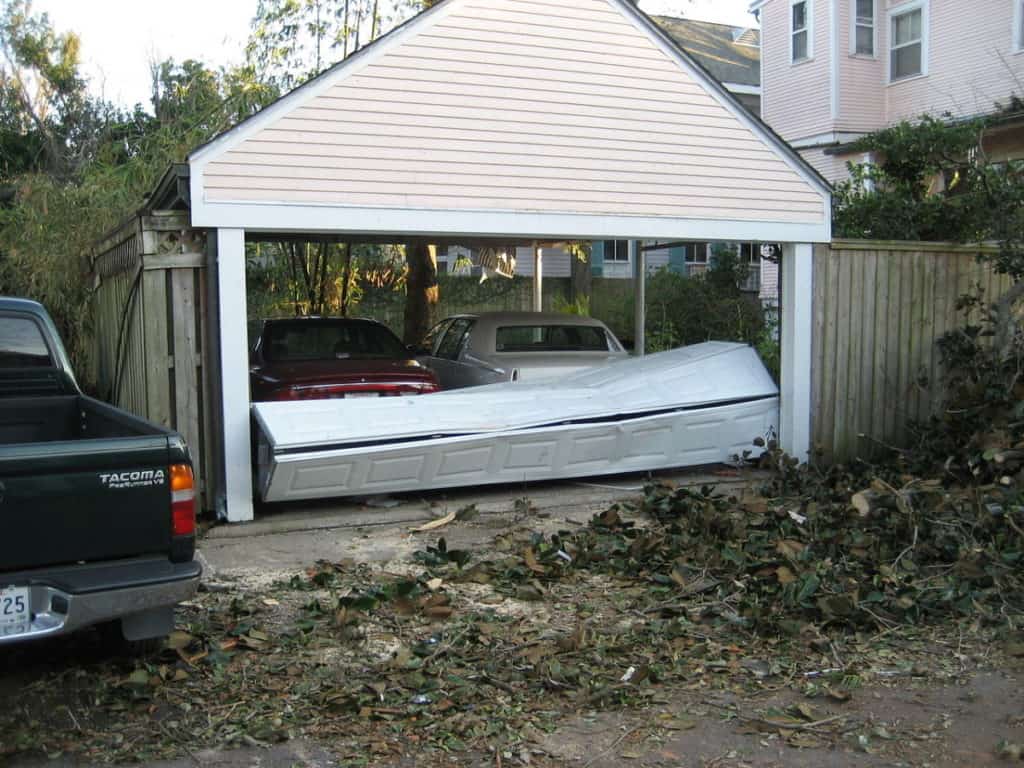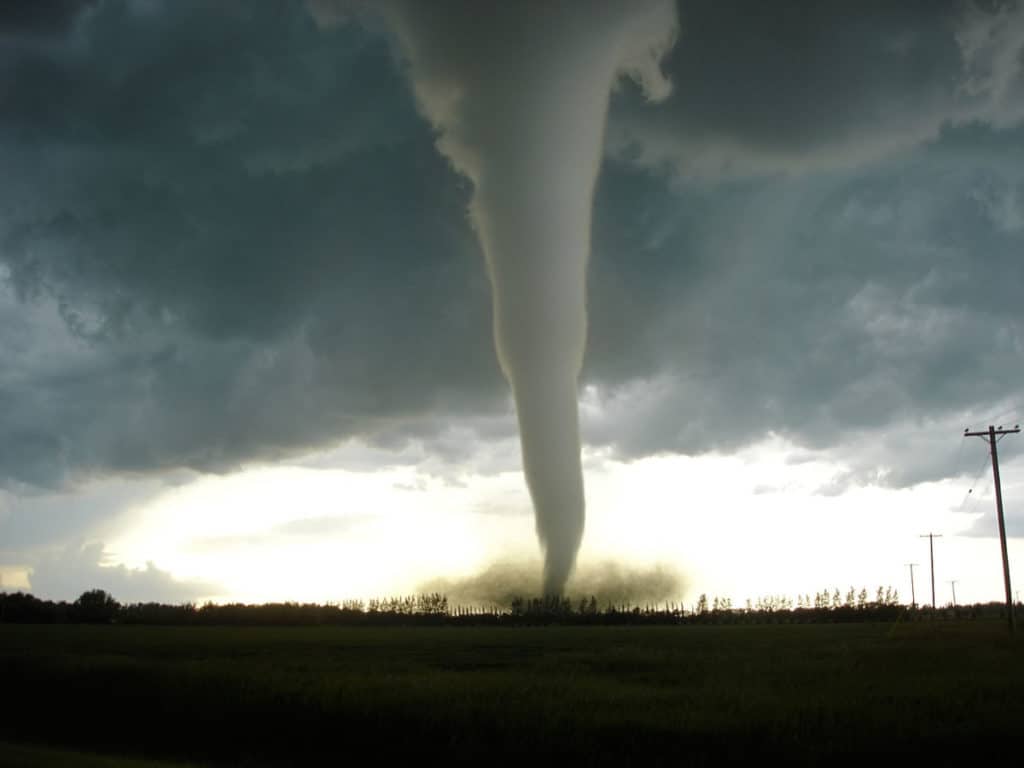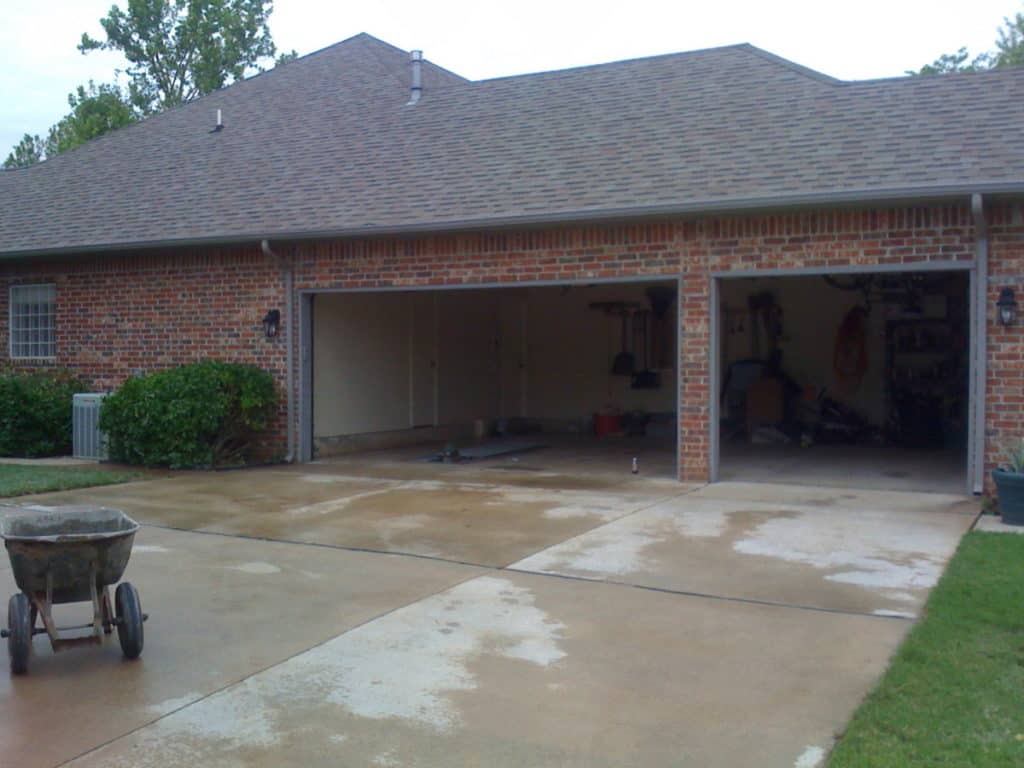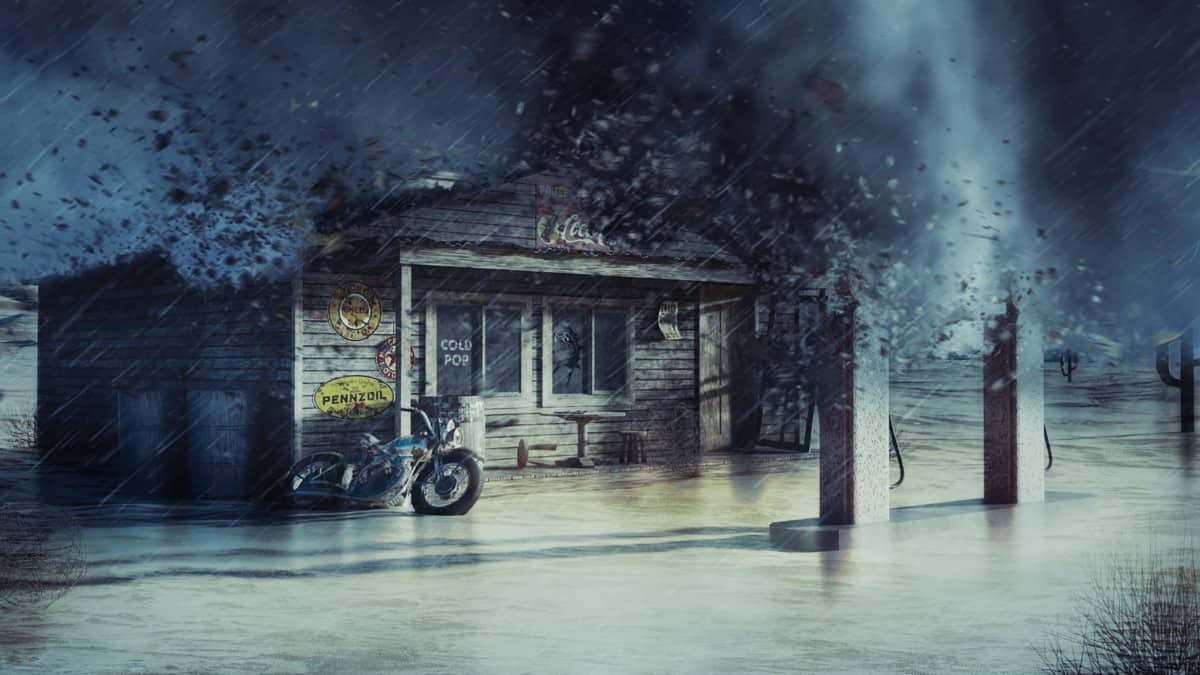Being safe during a tornado means having a plan in place before a tornado hits. Tornados tend to occur suddenly, and even though the technology to predict tornados is improving continuously, tornados are still unpredictable. Knowing where you should go to stay safe is essential.
Are garages safe in a tornado? Because of numerous issues with safety regarding a garage in a tornado, garages should not be considered an adequate tornado shelter.
The lack of interior walls and a large garage door make a garage unsuitable as a tornado shelter. This article will further explain why garages are not the best tornado shelters and will discuss some ways to ensure you and your family are safe in case of a tornado.
Table of Contents
The Garage Door

Garage doors are very convenient when getting your car in and out of a garage, but the door itself is a weak spot for a house in the event of a tornado.
The garage door is also the largest opening of a home, and it is most likely to fail rather quickly in a storm. If a storm blows the doors in or out, the pressure can build up, causing the supporting walls or even the roof to lose their integrity. This is called negative pressure.
This negative pressure creates a vacuum, resulting in an updraft, which causes structural damage and creates a space not suitable to protect people in a tornado.
[googleadsycc adunit=”inarticle”]
Wind Speeds and Garage Doors
If you live in an area known for tornados, it might be prudent to consider the strength of a new garage door, and the wind speed at which the garage door might fail. A study by Aaron L. Jaffe, et al., titled ‘Wind Speed Estimates for Garage Door Failures in Tornados‘ discusses the wind speeds at which garage doors fail.
In their testing, they noticed that roof failures on houses during tornados are closely related to the garage doors and windows. The study found that stronger doors did better, but other factors contribute to the integrity of the garage door as well. Specifically, the rollers, tracks, and fasteners fail as soon as the door does.
Since the impact of failing garage doors is a significant concern, the garage is not the first choice for a homeowner to seek shelter in the event of a tornado.
Can You Secure or Reinforce a Garage Door?
Taking the time to secure and reinforce a garage door could help your garage door be less vulnerable to high winds. Light garage doors are economical and easy to open but letting in the wind can create problems.
What to Keep in Mind
If a storm is coming already, it is too late to think about the garage door. Planning is essential.
- Evaluate the sturdiness of your door hardware, such as the anchor, track, and springs.
- Consider a door brace for your garage door. These systems reinforce the seams of the door. You might need stronger hinges and a more reliable center support system.
- If you decide to buy a new door, be sure to evaluate the wind pressure rating of the door to ensure your home and garage is as safe as possible.
Tornado Wind Speeds and Garage Doors

According to the Commercial and Residential Garage Door Technical Data Sheet distributed by Door & Access Systems Manufacturers Association International (DASMA), some cities have adjusted their building code to include garage doors designed to handle tornado wind speeds.
Tornado Ratings and Wind Speeds
| Tornado Rating | Wind Gusts MPH | Expected Damage |
| EF 0 | 65-85 | light |
| EF 1 | 86-110 | moderate |
| EF 2 | 111-135 | considerable |
| EF 3 | 136-165 | severe |
| EF 4 | 166-200 | devastating |
| EF 5 | + 200 | absolute devastation |
What Is the Difference Between Tornado Proof and Tornado Resistant?
Because a tornado can create winds over 200 miles per hour, it isn’t very easy to claim something is tornado proof. The term tornado resistant is used to describe the most durable building products.
[googleadsycc adunit=”inarticle”]
Do Tornado Resistant Garage Doors Protect the Entire House?
Since the garage door is usually the weakest part of a home, it is blown in rather quickly in a tornado. This allows air to rush in, the home to become pressurized, and, if the wind is strong enough, the wind seems to explode the walls and ceiling out.
In ‘First-Ever Building Code Requires Tornado Resistant Garage Doors,’ published by Door + Access Systems, it is explained that the city of Moore, Oklahoma’s mayor changed building codes for the city to include wind-rated garage doors. Researchers in Moore noted the homes with the most structural damage had a garage door failure that was breached first by the winds.
Granted, even a highly rated garage door cannot keep a home and its occupants safe during an EF 5 rated tornado but having a garage door that can resist winds up to 135 miles per hour can save lives.
Researchers who traveled to Moore to evaluate damage concluded the following:
- The homes in areas with lower wind speeds failed at the garage door openings.
- If the garage door was lost, the consequences of property damages were high.
- If the garage door fails, pressure builds up in the garage.
- Garages that stick out from the primary footprint of the home are more vulnerable compared to garages that are a part of the home structure.
- Damage to homes began at the garage.
What Is the Building Envelope?
The Federal Emergency Management System (FEMA) coastal construction manual discusses what is referred to as the building envelope and why it is essential in homes faced with high winds. If you think of a home as something that separates the occupants from the outside environment, the outside of that home is the building envelope. It is the outer shell that keeps us safe.
Wind hitting a building can increase the pressure on the inside of the building, creating a positive pressure, or it can build negative pressure by decreasing the pressure. These pressure changes happen if the building envelope is not sound enough.
Storm Shelter Location in a Garage

Some homeowners wish to install a saferoom shelter in their garages. These saferooms can be used as a safe place for storing valuables, a place to hide if there is an intruder, and they are often rated high enough to handle strong tornados.
These shelters are often placed in the garage because they are bolted directly into the concrete floor of the garage. The doors will open inward in case debris is blocking the door, as well. Above ground storm shelters are popular in garages because their below-ground counterparts run the risk of flooding during a tornado.
[googleadsycc adunit=”inarticle”]
The Safest Option
In the event of a tornado, the safest place to find shelter from the storm and the flying debris it creates is a basement. There are risks everywhere, though. The basement poses threats of flooding, and you may have to dig yourself out of debris if the walls collapse above you.
The second option is the ground level of your home. Try to find a room that has as many walls between you and the outside wall of the house. Additionally, interior bathrooms are great options as the plumbing pipes reinforce the walls, they tend not to have windows, and the tub offers extra shelter.
To Conclude
Because damage to a house begins at the garage, it is unwise to choose the garage as your place to weather out a tornado. Unless, of course, you have an anchored storm shelter built in the garage.
If you lack an anchored storm shelter, find shelter in an interior room of your home with as many walls between you and the exterior of the house as possible. Bathrooms without windows are great options since the pipes in the wall offer additional support.



0 Comments